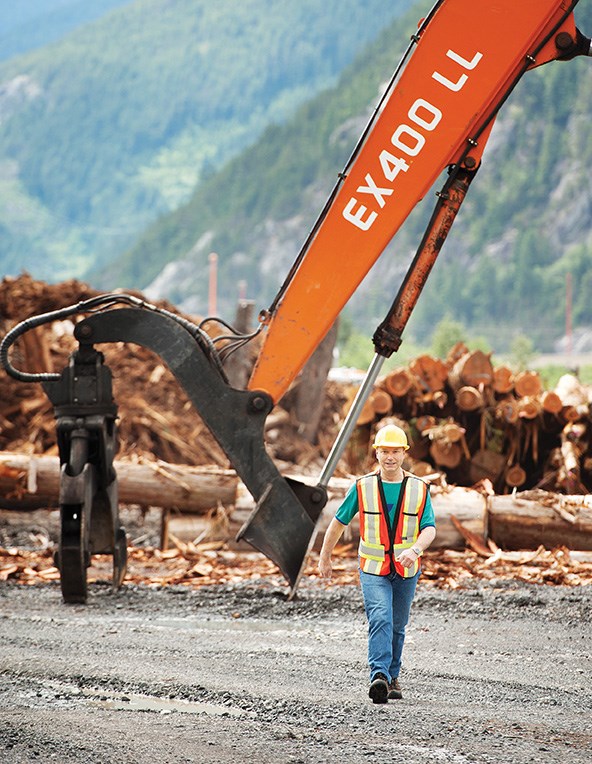In light of a recent report highlighting B.C.’s Forestry sector, industry representatives in Squamish want to call attention to the “green tech” industry that they say already exists in the community.
In an effort to remind British Columbians about the importance of the forestry industry, the B.C. Council of Forest Industries has commissioned an economic report released on Sept. 25 looking at employment numbers and economic output.
According to the report, which was produced by PricewaterhouseCoopers (PwC), the forestry industry, directly and indirectly, accounts for a total of 140,000 jobs — or one in every 17 jobs in the province.
Some of those jobs are located in Squamish, although fewer than in the past.
While the majority of the industry is now located in the Interior, rather than the coastal region, the sector generates $33 billion in output and $12.9 billion in GDP.
Eric Andersen, of the Squamish and District Forestry Association, said the report is a good reminder to locals who are disconnected from the community’s founding industry.
“It’s always a challenge to explain an industry that fewer people are engaged in. Both on the provincial and the local level, the truth is there are fewer people in the population directly engaged in these industries.”
Data from Statistics Canada, used by the District to predict industry trends, list construction, retail, and tourism support such as accommodation and food as the main industries in the region.
Agriculture, forestry, fishing, and hunting are grouped in the same category and have been on the decline since 2001. The 2011 stats suggest that in Squamish proper, there are 100 jobs in that category, which is kept separate from manufacturing, warehousing, wholesale trade, technical services, transportation, and retail.
Similar data from the entire Squamish-Lillooet region raises those numbers to 575 jobs.
In a report released in May 2016, the Squamish and District Forestry Association disputes the small number of Squamish jobs, calling the category too limited, since it doesn’t take into account the larger number of support jobs in the forestry industry.
Andersen said while local manufacturing jobs have seen a decline – the closure of the Woodfibre mill in 2006 ended paper manufacturing jobs in the area – specialized technical jobs in the forestry industry have grown.
Those “support industries” would include geological assessments on logging roads or sustainability surveying. The association estimates their employment numbers in the corridor are closer to 300 people.
Andersen said locally, Squamish has over 60 timber harvesting companies, but the contributions of lumber and lumber shipping to the economy are often overlooked. He cites the district’s ambitions to attract high-tech green businesses as an example.
He said the modern forest industry is already a sophisticated green industry that employs many skilled workers – and delivers jobs with high wages.
“In high tech, there are a lot of businesses that are highly mobile. It’s easy for them to pack up and move, but the trees here won’t move. We have a lot of infrastructure in the forest industry that is here for the long term. Whereas in high tech, we have a lot of businesses that are highly mobile. It’s easy for them to pack up and move.”
“We can have it all in Squamish. We can have traditional but forward-looking industries and all the rest of it,” he said. “We can have it all, but we need awareness in our strategy.”




